I visited a family-owned Massachusetts cranberry bog, and waded right in! Join me for a visit to Hartley Family Farm in Plymouth County to see the cranberry harvest up close, learn more about this native New England fruit, and have a fun fall adventure.
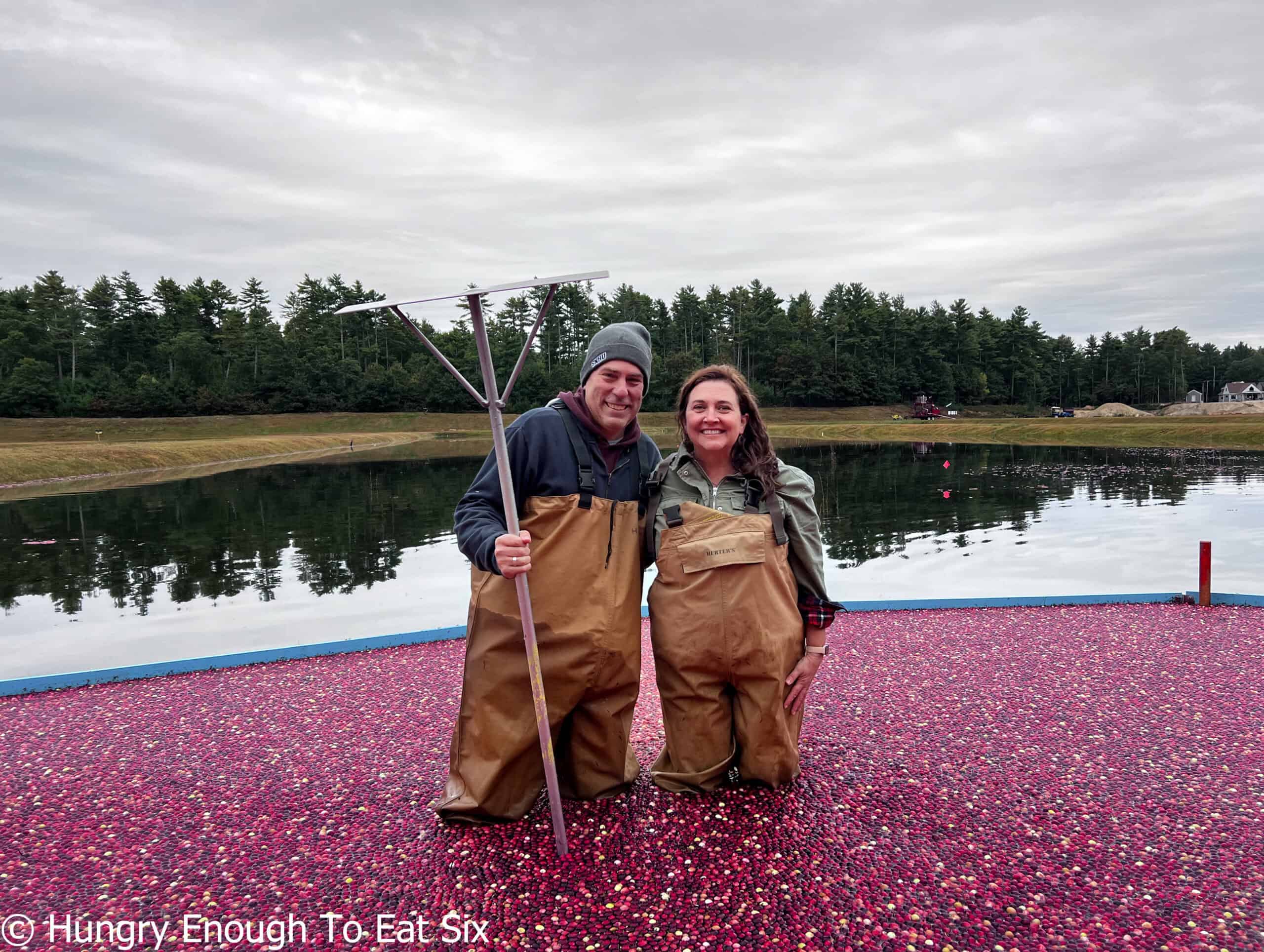
This post contains affiliate links and I may earn a small commission when you click on the links at no additional cost to you. You can read my full disclaimer here.
Did you know that, according to the Cranberry Growers Association, there are more than 13,000 acres of cranberry bogs in Massachusetts? And that you can head right over to some of those bogs to see the cranberries up close?
As soon as I learned those fun facts, I knew I wanted to visit a Massachusetts cranberry bog! Here's the story of the trip my husband and I took to Hartley Family Farm, a cranberry producer in Plymouth County, and everything we learned about this favorite tart fruit.
Spoiler alert: we got wet!
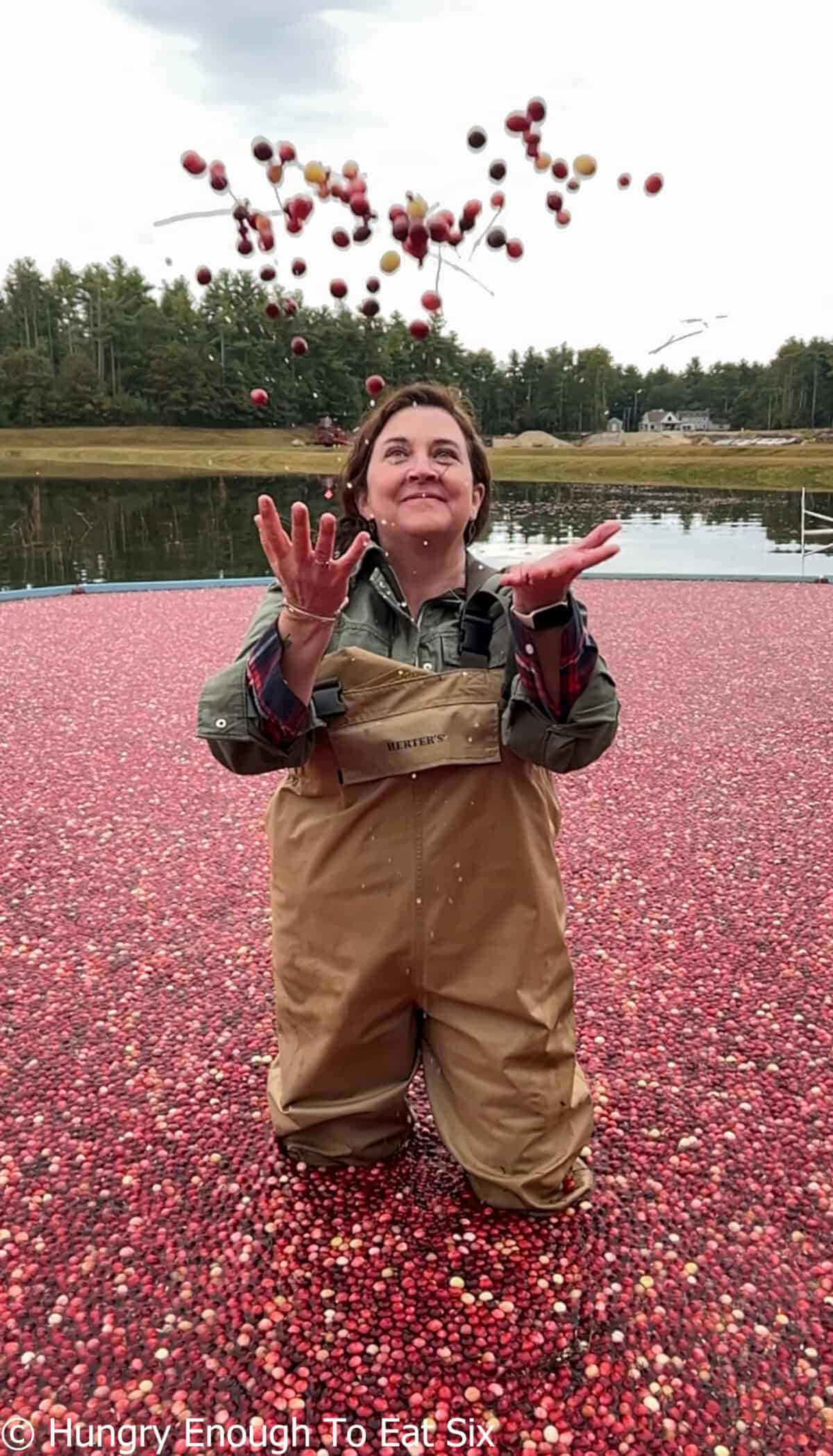
In a nutshell... 🐿️
- What this is: A story about a fun fall adventure my husband and I had: a visit to a family-owned cranberry farm in Southeastern Massachusetts.
- You'll love this part: It's a unique New England experience to see how this native fruit is grown and to wade in a bog full of floating cranberries.
Jump to:
- Look... cranberry bogs!
- A cranberry sunrise
- Cranberry Pumpkin Hand Pies
- The history of Hartley Family Farm
- Harvesting cranberries wet or dry
- Cranberry White Chocolate Bark
- We swam with the berries
- Cranberry souvenirs at the end of the tour
- Visit Hartley Family Farms
- More cranberry trivia
- Cranberry FAQs
- Use Massachusetts cranberries in these recipes!
- More Noshing Across New England
- 💬 Comments
Look... cranberry bogs!
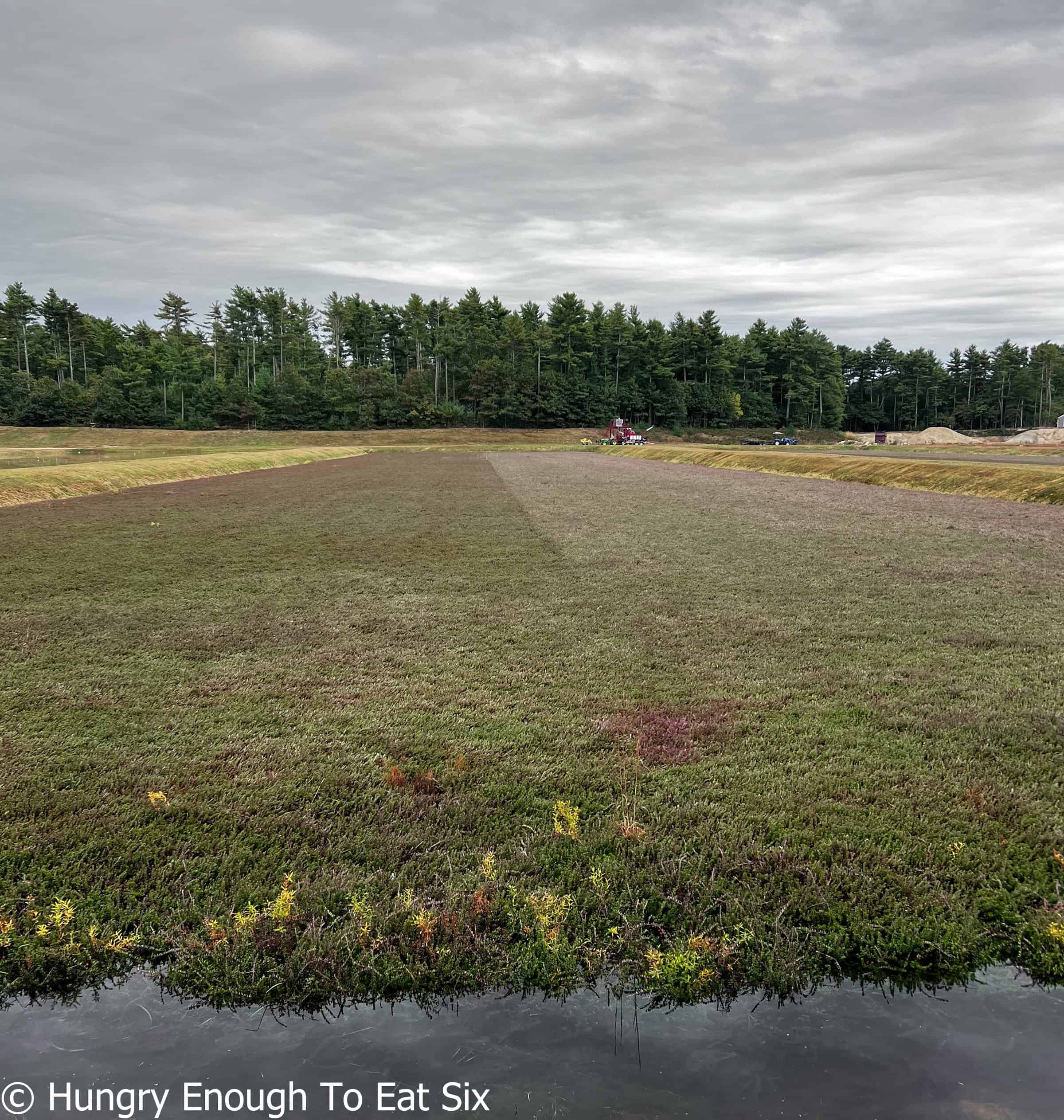
On a recent work trip that took us through the southeastern part of the state, we noticed several areas along the roads that, at first glance, appeared to be low-lying fields. Except, these fields had several wide, rectangular troughs running parallel to each other, with scrubby little shrubs growing at the bottoms. And that's when it hit us: we were in cranberry bog land!
As my husband and I had just recently moved to the state, it hadn't yet occurred to me to look into visiting a cranberry farm. Activities like apple picking, pumpkin picking, corn mazes, and harvest festivals saturate the fall season; all the usual fun autumn stuff that dominates online events pages and email newsletters. Well, what about cranberries?
I went searching, and sure enough, several cranberry bogs in Massachusetts offer tours. So, we chose Hartley Family Farms in Rochester, Massachusetts, about 60 miles south of Boston.
A cranberry sunrise

Cranberry harvesting season runs from the middle of September until early November, so I signed us up for a tour in mid-October. I booked the first slot of the day, which saw us up at the crack of dawn to make the 90-minute drive to Rochester, Massachusetts.
Getting up that early is normally my very least favorite thing in the world. However, that morning I was really grateful that I got my behind out of bed and into the car—because we caught the most stunning and breathtakingly red sunrise I think I have ever seen in my life!
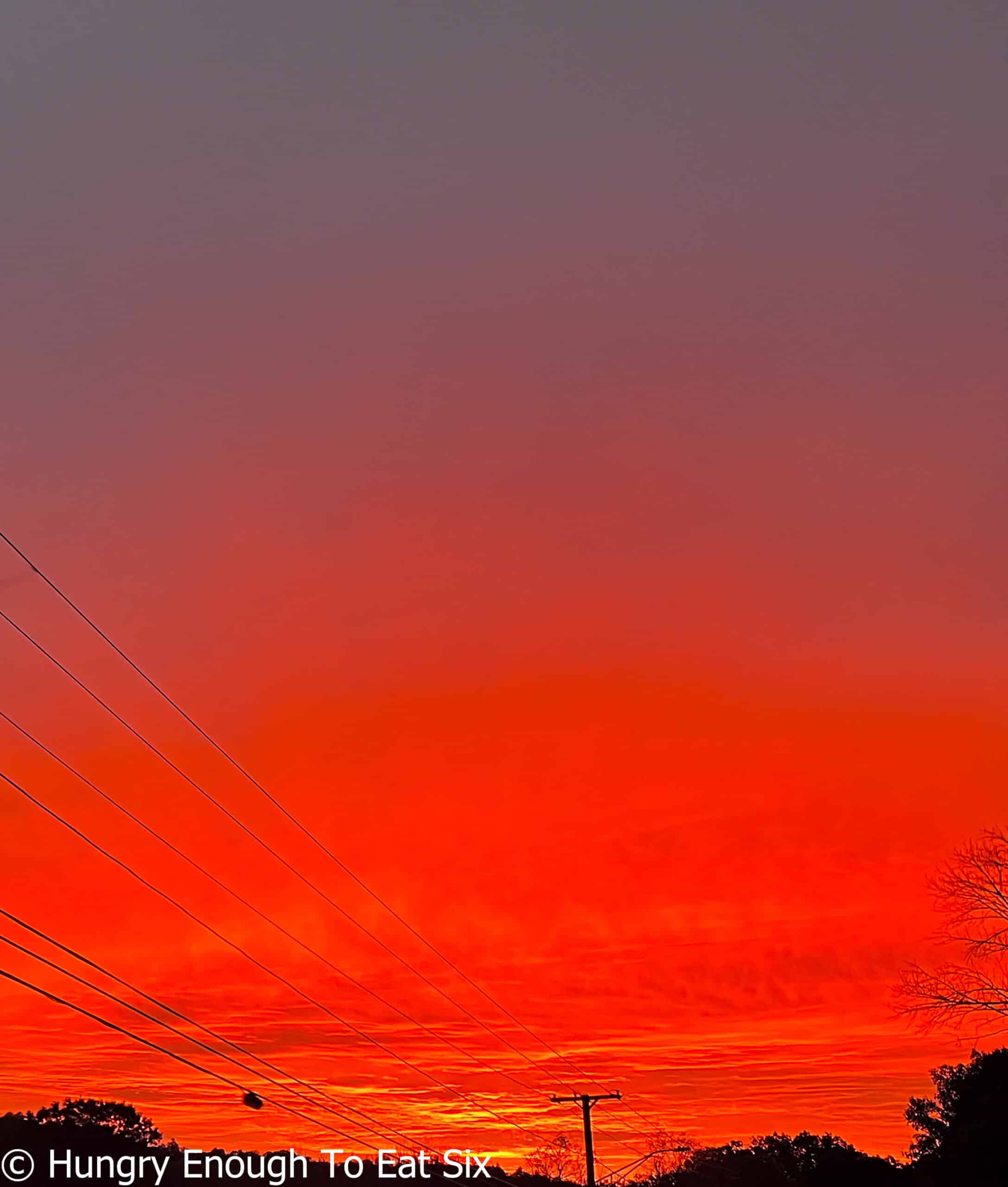
These photos barely do it justice... the landscape and sky were just glowing. It was like we were at the center of a campfire where embers quietly burned.
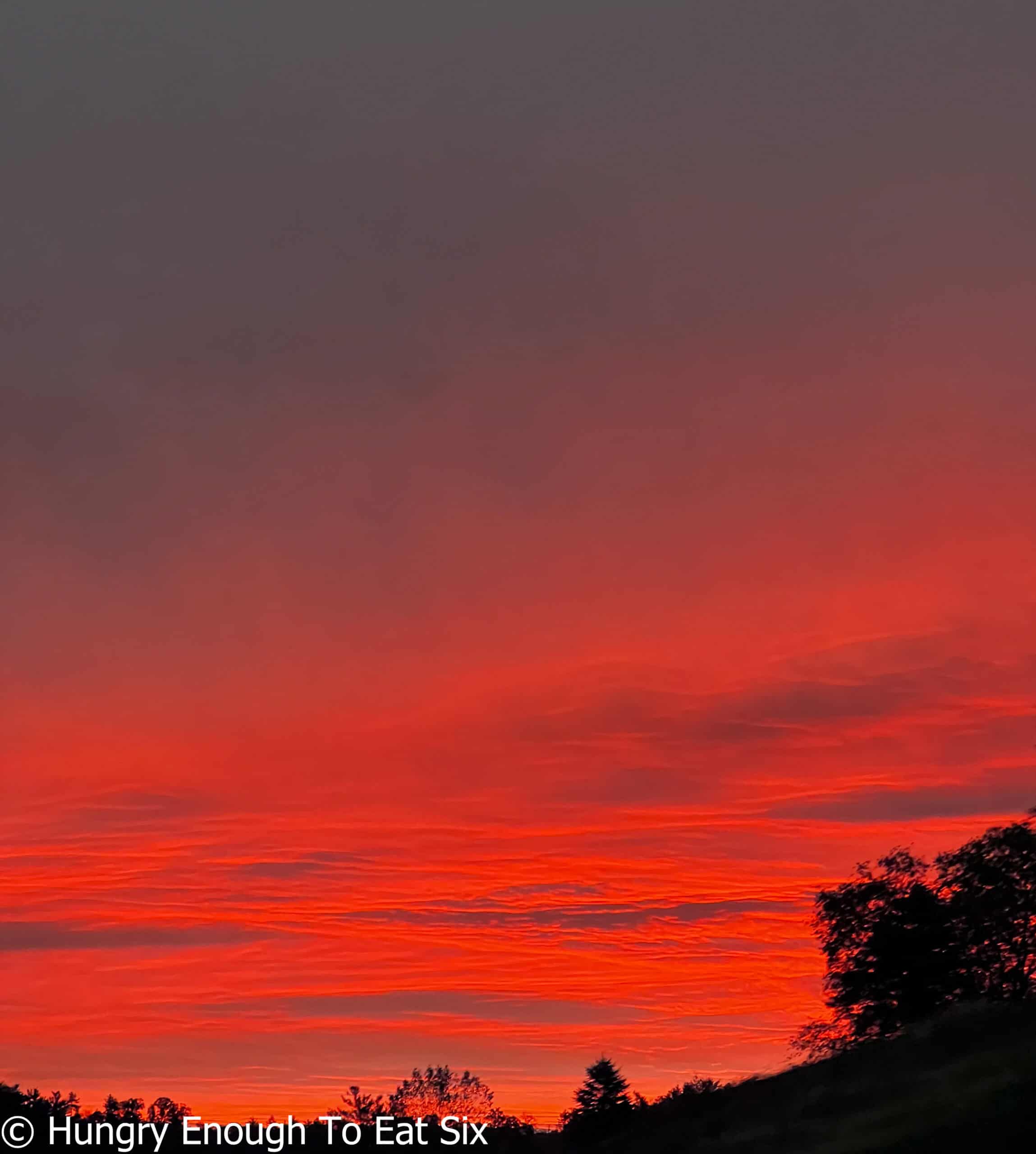
What a serendipitous discovery to find a cranberry-hued sunrise to start our cranberry day!
The history of Hartley Family Farm
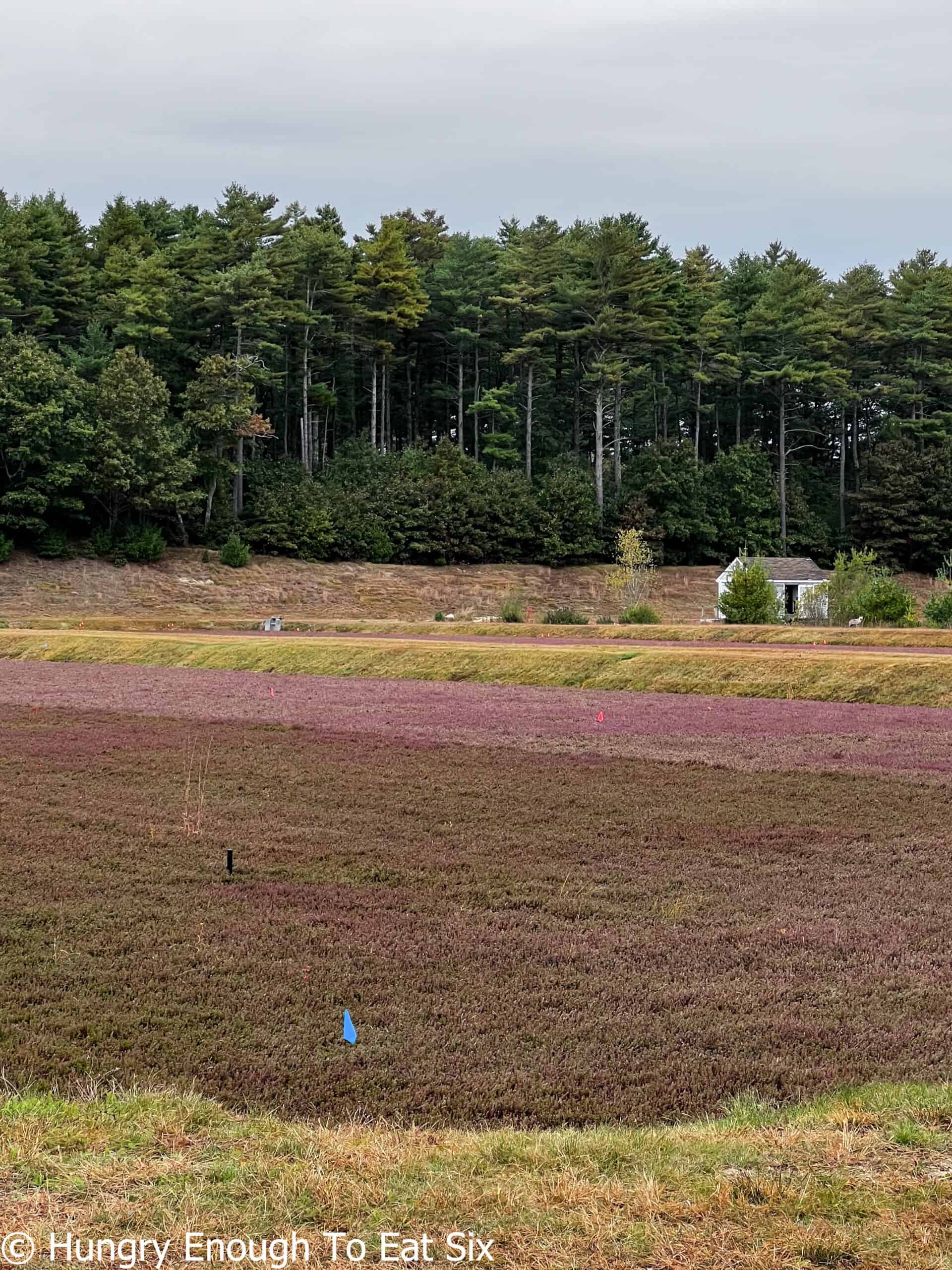
When we arrived at Hartley Family Farm, we found ourselves at a wide open clearing ringed by trees and flanked on one side by a farmhouse up on a small hill. There was a little mist hanging around that mingled with clouds of our breath in the cold air. In that clearing were enormous, rectangular, wide and shallow trenches, their floors covered with carpets of stubby, reddish-green shrubs. And one trench was filled with water—more on that one later!

We took our seats in a wagon hitched to a big green tractor, and our tour began. The tractor pulled us slowly around the sandy perimeter of the clearing so we could look at the bogs on our left and also see examples of the equipment used on the farm for tending and harvesting perched on our right.
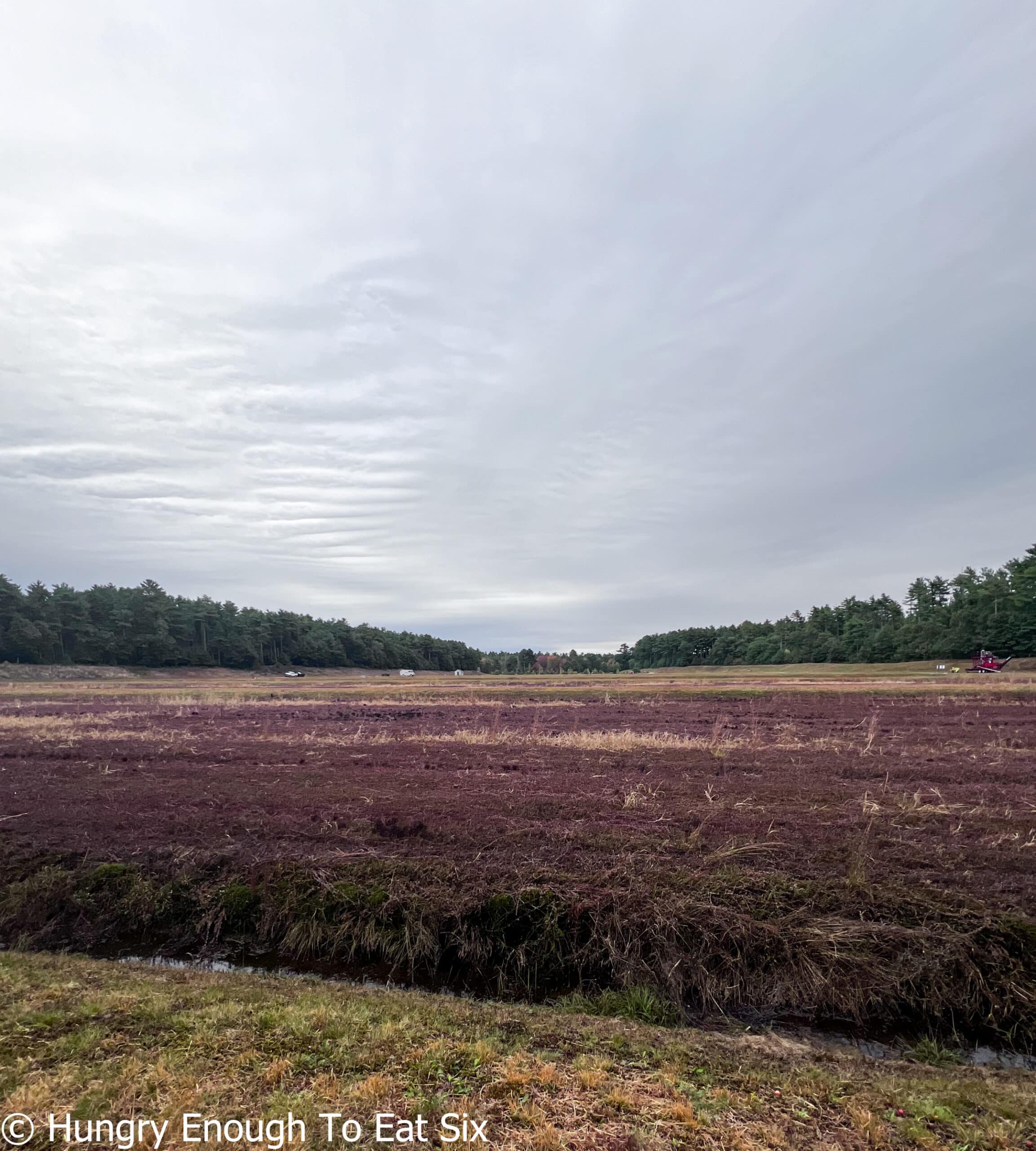
Our guide shared that this family-owned farm has been going strong since the 1940s, and it was originally a traditional New England farm with crops and cows. When the grandparents of the family who had been running the farm decided they wanted to retire, their kids and grandkids had a decision to make: sell the land, or keep the land and reimagine the kind of farming they could do there. They decided to keep the farm and go cranberry!
The pastures were dug out and converted to bogs. Near the bogs, the family installed their own freshwater reservoir to ensure a consistent water supply for growing and harvesting the berries. More than 25 years later, the Hartley cranberry business is going strong, and the whole family lives right there on the farm, where they harvest almost 200,000 pounds of cranberries annually.
SAVE THIS RECIPE OR POST!
Harvesting cranberries wet or dry
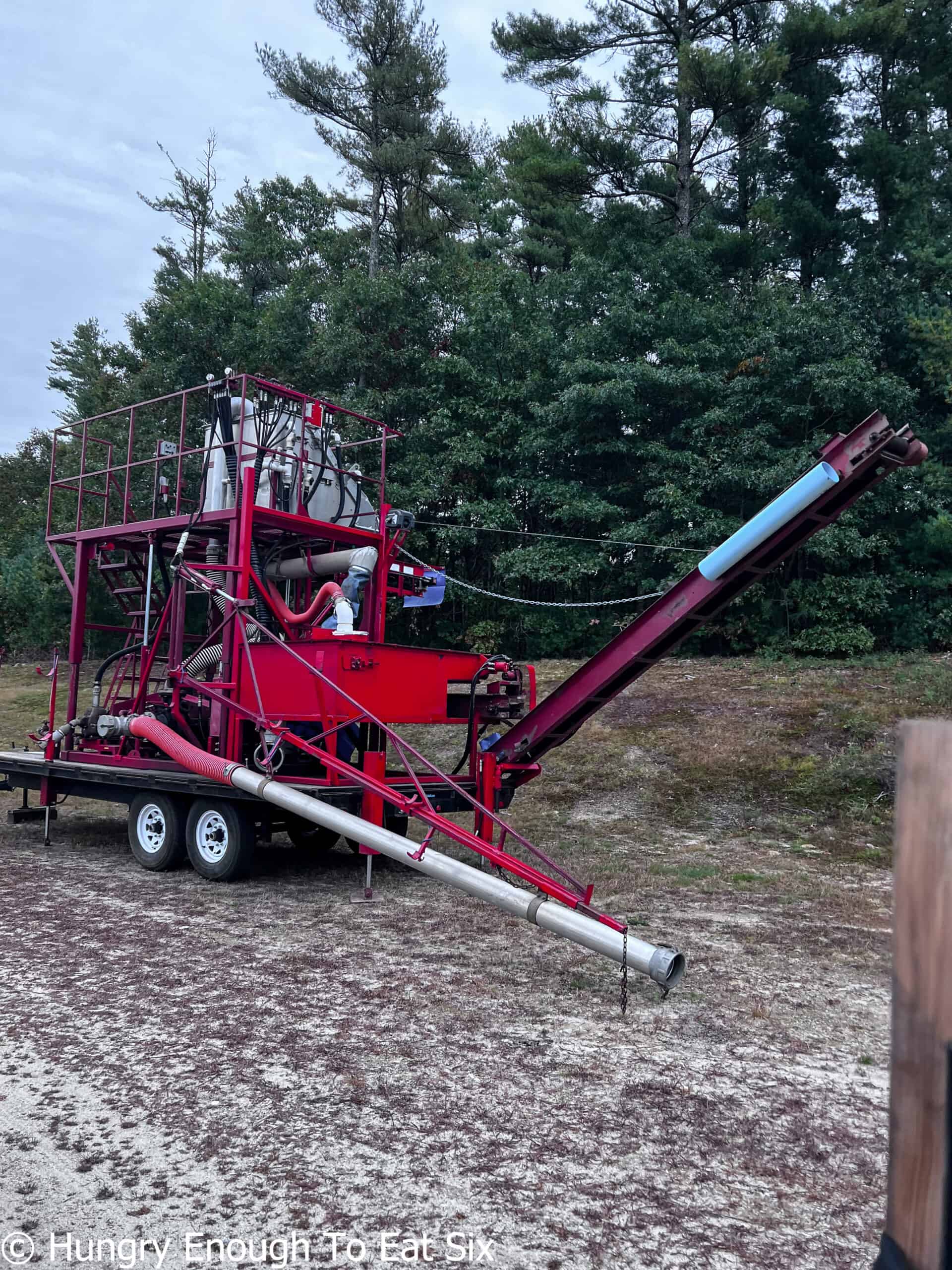
As we rolled along, we saw a massive piece of machinery that's used to vacuum cranberries out of the water. We also saw some smaller, more traditional equipment: handheld rakes.
These look like open-top boxes with a huge comb extending out from the bottom. As it's thrust through the shrubs, the long teeth of the comb separate the cranberries from the stems and gather them at the back of the box.
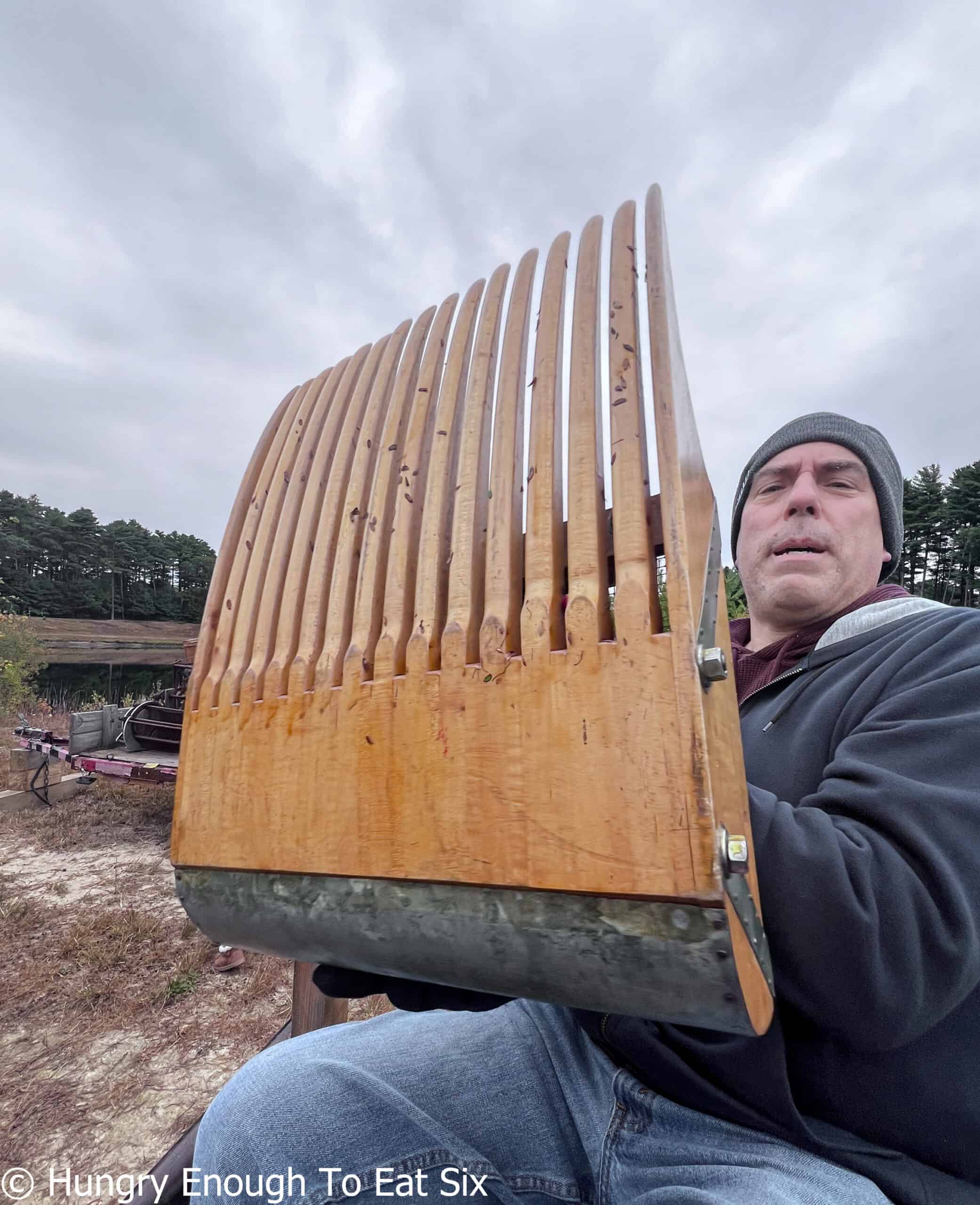
These two pieces of equipment represent the two methods of gathering cranberries: wet harvesting and dry harvesting. Handheld or mechanical rakes are used to dry harvest the berries, picking them right off the shrubs. It was once done by hand only; even with mechanical rakes, this method is labor-intensive and time-consuming.
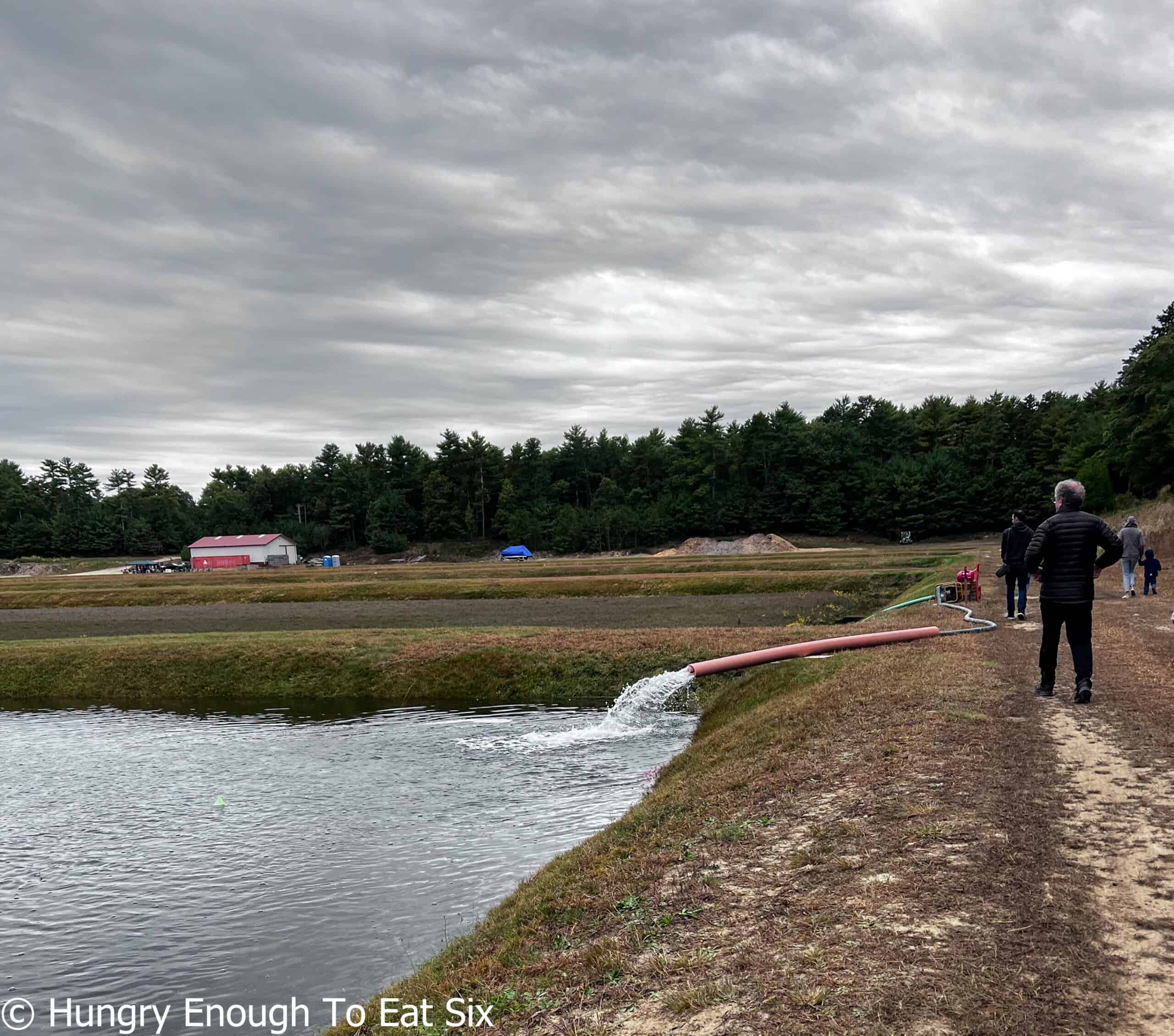
Wet harvesting, which is what we see when bogs are filled with water, is a more new-fangled technique that's only been happening since the 1960s or so. Cranberries are naturally buoyant thanks to pockets of air inside the fruit. Growers realized that flooding the bogs and submerging the cranberry shrubs sends the berries to the surface of the water, where they can easily be skimmed or vacuumed.
The Massachusetts Cranberry Association shares that large reels are sent underwater to shake the berries loose from their stems. Once they're afloat, the berries are gathered with pumps and sent off for processing.

One thing I learned on the tour that I'd never heard before is that only dry-harvested cranberries can be sold whole and fresh, in those plastic bags that are always piled high in the produce section at Thanksgiving time. Wet-harvested berries from flooded bogs must be processed into products like cranberry sauces, dried cranberries, and cranberry juice. Fascinating!
We swam with the berries

Well, we didn't really swim. This is late October in Massachusetts, after all. But we certainly waded!

As the tractor towed us to the opposite side of the clearing, we came upon the one flooded bog. The shrubs were completely submerged, and the surface of the water placid and smooth. Next to the flooded bog was a trailer perched on the grassy slope, stocked with rubber waders of every size imaginable, including little waders for the kids on our tour.
(Speaking of kids, we shared with our doctor that we would be going on this tour, not for any medical reason, just for chatting! She shared that as a kid, her family had also gone on a cranberry bog visit—and she got in a lot of trouble when she pushed her sister down in the water!)
There was a large, round boom resting on the surface of the water. And inside it? Hundreds of thousands of floating cranberries!

We and the other tour members pulled on our waders and eagerly descended into the cold, berry-filled ring. The berries were packed close together over the surface, creating a layer that undulated with every ripple of the water as we moved along.
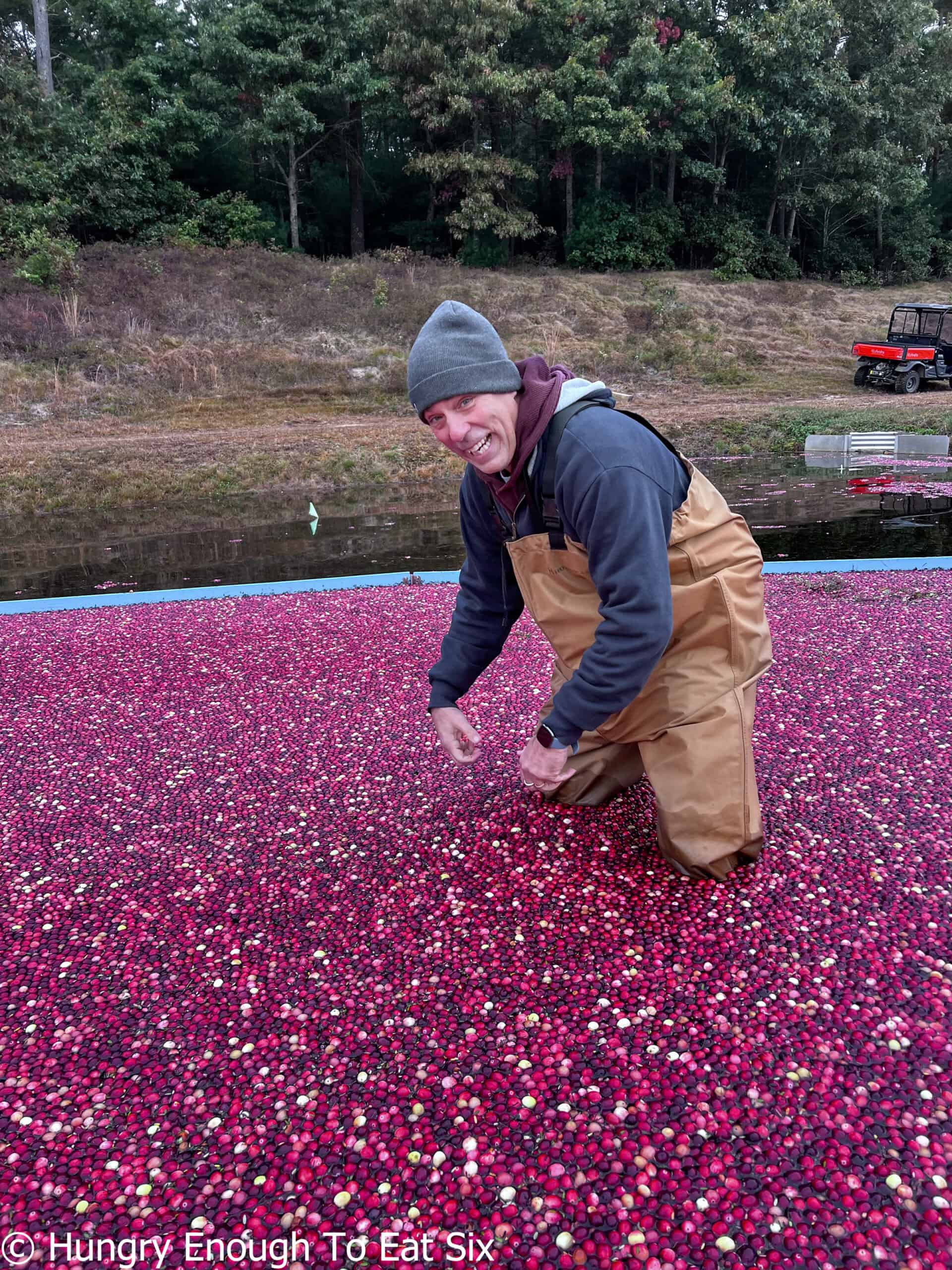
Once we were in the bog, we of course took about a hundred selfies! There was even a cranberry rake to push the berries around. (And pose with.)
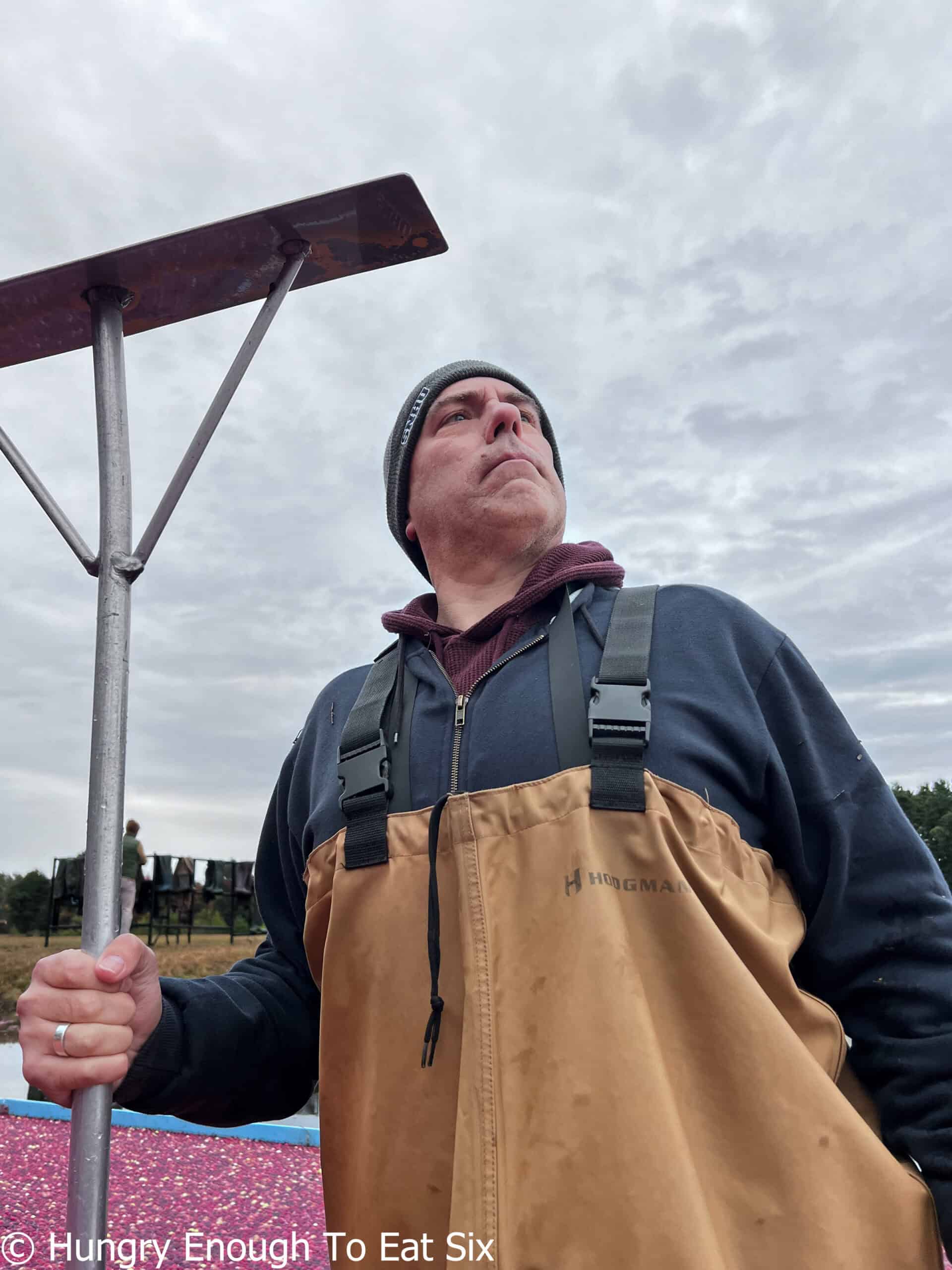
The farmer supervising our swim told us to try cranberry skipping. It's just like you'd do with a pebble across the surface of a pond, except here, we skipped cranberries across the top of the other cranberries!
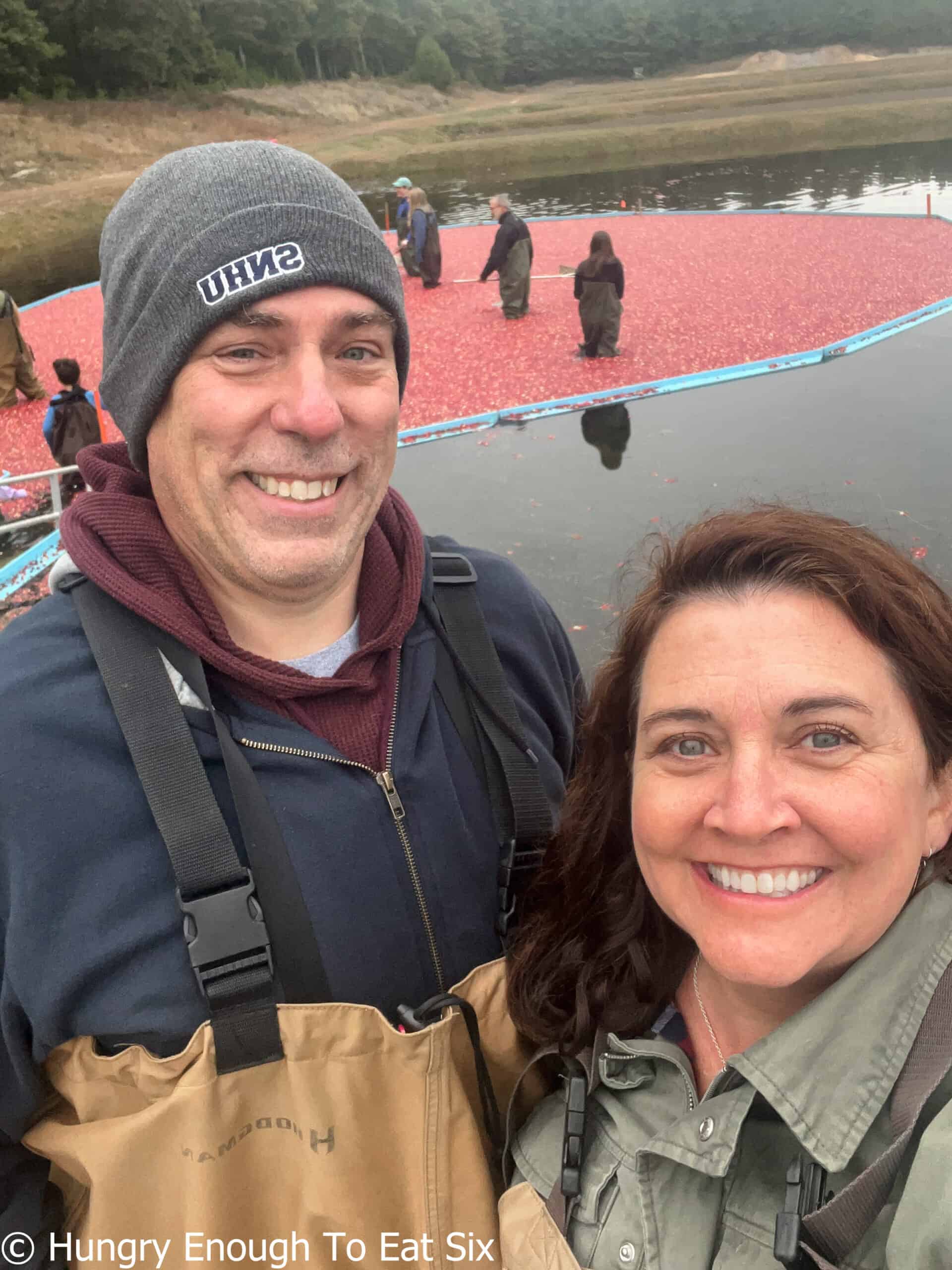
You wouldn't think that simply standing in waist-high water would be so fun—but throw in a few thousand crimson, floating berries, and it's a real blast!
Cranberry souvenirs at the end of the tour

After we'd had our fill in the cranberry bog, we returned our waders and walked around to the front of the clearing, completing the circuit around the Hartley cranberry bogs.
Before we left, we visited their little booth and bought some fresh cranberries, a long-sleeved, light cranberry-red tee (that's so wonderfully soft!), and took home some cranberry recipe cards.
We spent a few minutes talking with one of the owners, Sharon, who, like the rest of the Hartley family we met on the tour, was just so friendly and happy to be hosting all of us on that chilly morning.
And we were happy, too, to participate in this unique Massachusetts experience!
Visit Hartley Family Farms

Hartley Family Farms is located at 22 Walnut Plain Road in Rochester, Massachusetts, which is in the southeastern corner of the state, not far from Buzzard's Bay.
You can visit the Hartley Family Farm website to schedule a cranberry bog tour of your own! Just remember that because cranberries are harvested in late fall, the tour dates are during the month of October.
More cranberry trivia
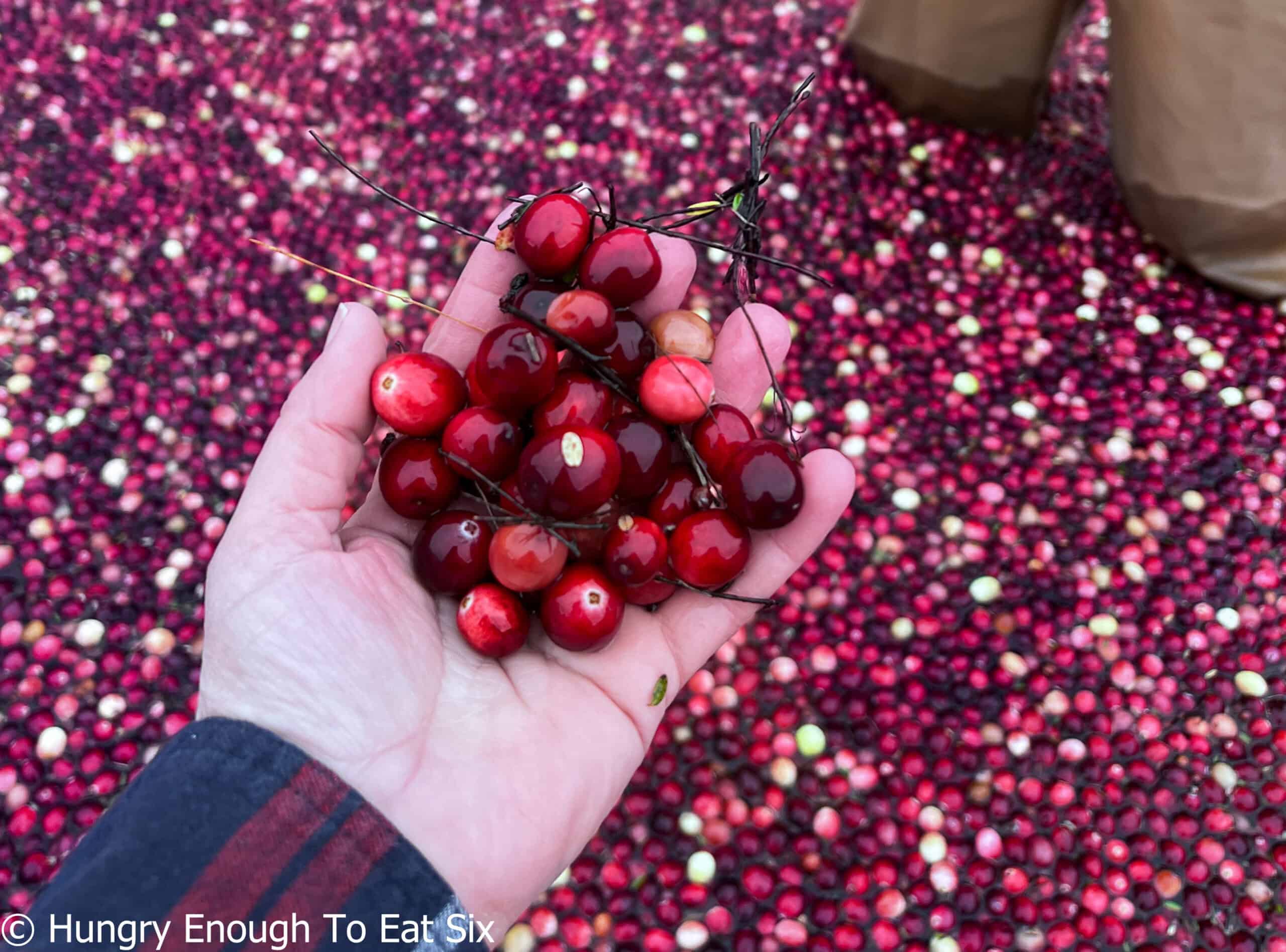
- According to the state's Cranberry Association, Massachusetts is the second-largest growing area for cranberries in the country!
- Bees are essential to any cranberry-growing operation. They pollinate the shrubs in springtime for a healthy and ample harvest in the fall. It's too important a step to leave it to chance that bees will find the cranberry blooms, so Hartley Family Farm rents beehives to place along their bogs.
- Native Americans used cranberries to make pemmican, a preserved mixture of dried venison and fat that was a vital food and sustenance on long journeys and through the frigid winters. Cranberries added extra nutrition and flavor to the meat jerky.
- Cranberries are measured by the barrel, a measurement standard used since the days when the berries were actually shipped in barrels. One barrel of cranberries is about 100 pounds.
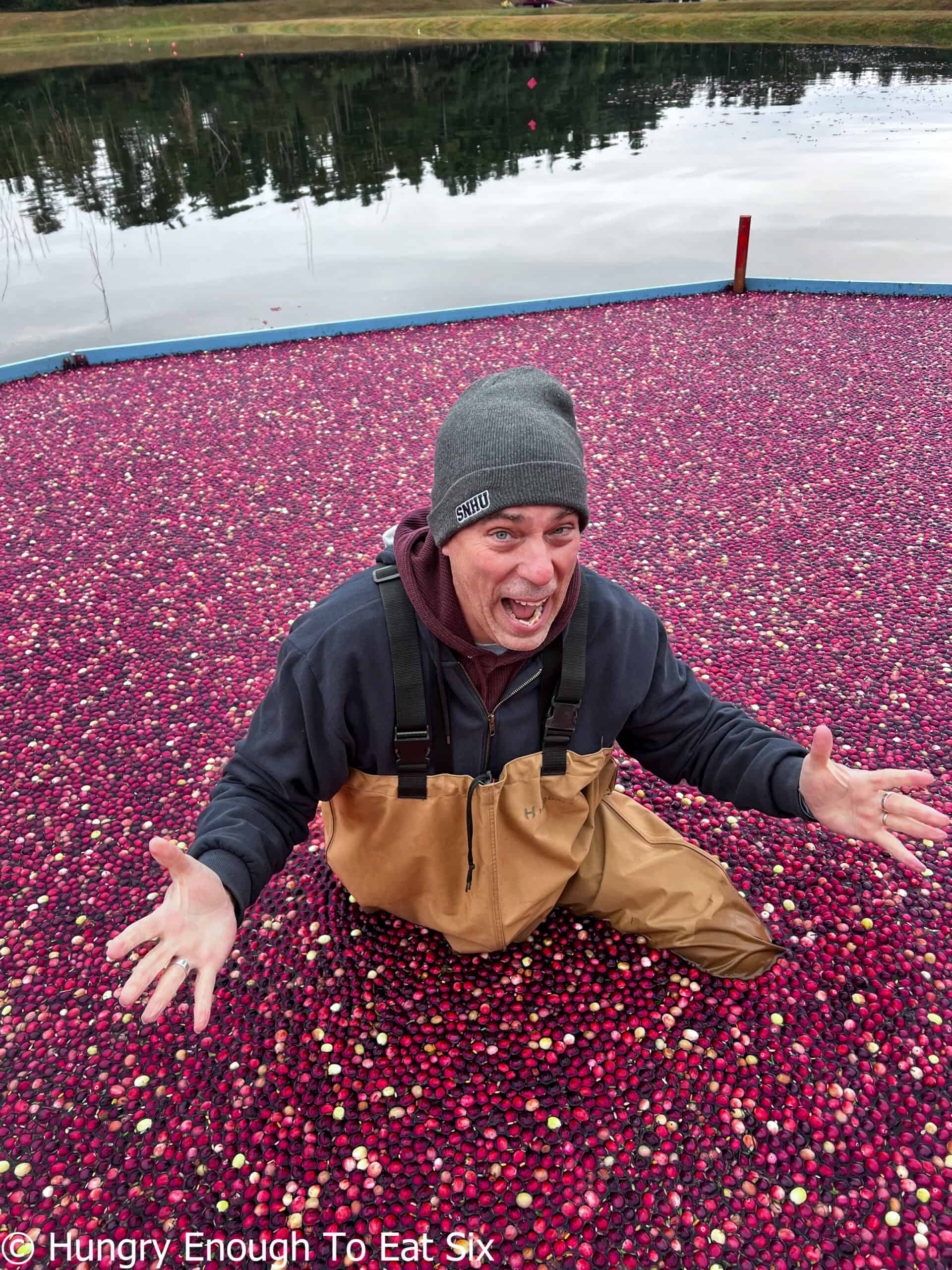
Cranberry FAQs
The native Wampanaug tribes that first inhabited Southeastern Massachusetts named the tart berries sasumuneash, and introduced the fruit to colonists who arrived from England and Europe. English colonists noticed that the flowers, with white petals curled back from a cluster of long red stamens, resembled the head of a sandhill crane. They called the fruit "crane berries", which evolved into today's "cranberries".
No, cranberry shrubs are grown dry in sandy, acidic soil. The bogs are only flooded once the fruit is ready to harvest, so that the berries will float and be easier to gather.
Yes, cranberries are a native fruit to North America. The two states with the highest production of cranberries are Massachusetts and Wisconsin.
Use Massachusetts cranberries in these recipes!
More Noshing Across New England
Visiting a cranberry bog is just one of the delicious, unique, and fun things you can do in New England. Here are more tasty adventures I've found on the road here:













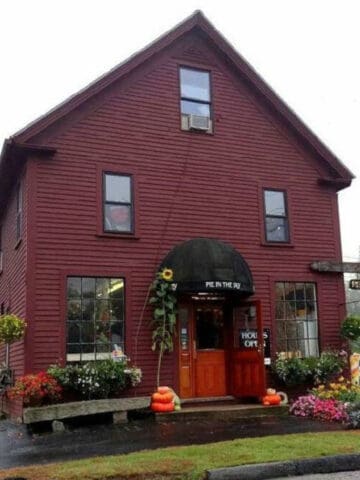





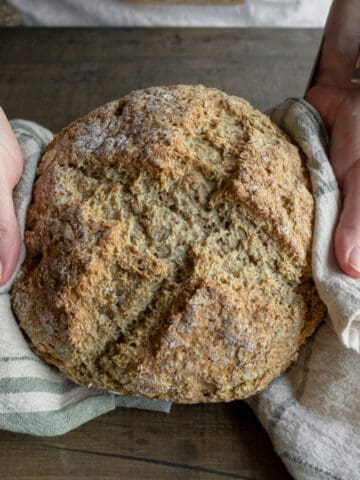
Comments
No Comments